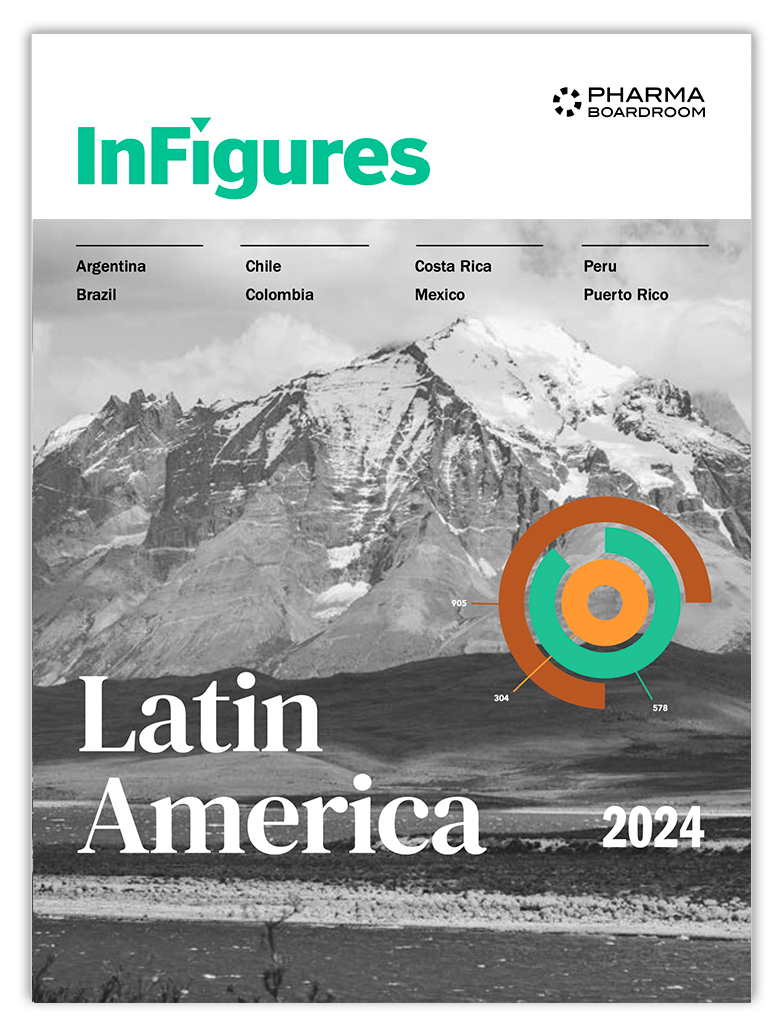US FDA India Office Director Sarah McMullen discusses the importance of maintaining India's role as a global supplier of low-cost generics while also navigating the complexities of innovating and producing more complex pharmaceutical products. She notes that increased product complexity will inevitably lead to more regulatory challenges, emphasizing the need for continuous improvement in quality standards and regulatory enforcement to ensure safety and efficacy.
As you approach your fifth year at the US FDA India office, could you please share your reflections on the evolution you’ve observed in the Indian pharmaceutical market?
I’ve been serving as the country director since February 2021. I have held several positions within the FDA’s India Office during my time, which has been incredibly helpful in understanding the full gamut of our role from inspections to information sharing. During my tenure, I’ve observed a high interest from parts of the Indian pharmaceutical sector in wanting to be compliant with FDA regulations and that interest continues to be seen as we engage with government counterparts, industry, academia, and other sector stakeholders. While many in the industry seek to understand and comply with FDA regulations, it is disappointing that we continue to have data integrity issues and willful noncompliance as witnessed in recent inspections. FDA works to combat this through inspections, continued partnership with our regulatory counterparts in India, and capacity building among industry stakeholders.
Aside from compliance trends, I will also note that we are aware of India’s significant interest in innovation and the development of biologic and complex medical products. We have seen the Government of India (GOI) and industry seeking to capacitate themselves in this area, and FDA has already participated in opportunities to share regulatory information and best practices with stakeholders in India (e.g., workshops, panel participation, email notifications, and subject matter expert in-country visits).
India hosts the largest number of US FDA-approved plants outside the US (600 plus), with every third tablet in the USA originating from India. How are you and your team able to stay on top of this vast network of facilities to ensure all the products exported to the US meet US standards?
First, I want to note that these would be considered FDA-registered facilities – FDA does not approve them, though we inspect facilities and can take action if they are not compliant with our regulations. Monitoring such a vast network of facilities is certainly a large responsibility. FDA views compliance as a shared responsibility, we count on industry to do their due diligence to be compliant with FDA regulations and encourage facilities to go above and beyond cGMPs which we view as a baseline of compliance. We leverage information from multiple tools and resources to determine area of greatest risk and prioritize those areas for resource expenditure.
What roles does the office assume beyond inspecting facilities alone?
FDA plays many roles beyond facility inspection. We have a role in capacity building, and we facilitate information sharing with our regulatory counterparts and industry. Through our engagements we learn where there are gaps in understanding and/or practice and determine where information sharing could benefit. With our regulatory counterparts, we share best practices in everything from inspections to clinical trial design and oversight to evaluation of novel products, to name a few.
India is attempting to prioritise innovation, scale the pharmaceutical value chain, and shift from ‘Make in India’ to ‘Develop in India?’ How can FDA support this transformation?
FDA leads standards and practices harmonization efforts with other regulators across many regulated markets and commodities to reduce regulatory uncertainty and provide more predictable pathways for innovations to meet standards for safety, quality, and efficacy. Often, regulations are viewed as barriers. However, when applied appropriately, regulations are facilitators. When regulations are applied consistently across multiple markets, that standardization increases both access to markets by industry and to products by consumers and patients.
What do you see as the key challenges ahead as the country moves beyond low-cost generics alone?
First, I would emphasize the important role that they play in the production of low-cost generic drug products and the need to maintain their current role as a global supplier of these critical products. As to the challenges of pursuing a greater focus on innovation and development of complex products in India, among other things, the increased complexity (and risk) of products would lead to a commensurate increase in regulatory complexity.
When we last spoke to the FDA’s India Office back in 2018, it was on the back of a spate of warning letters issued to Indian facilities. Commonly cited problems at that time included inadequate or poor-quality systems implementation, data integrity issues, inadequate validation of various manufacturing or testing processes, and product contamination. How has Indian pharma manufacturing progressed since then and what are the most common issues you encounter today?
Some facility inspections in India have found deficient manufacturing practices that do not meet U.S. product quality standards. FDA communicates these violations to pharmaceutical manufacturers and urges them to take actions to address these issues to protect the health and safety of U.S. patients. For example, the agency has identified significant data integrity issues at some facilities in India, and we take such data integrity lapses very seriously. In response, FDA has taken appropriate actions, including issuing import alerts to help stop products from entering the U.S. market and warning letters calling for corrections to be made. We observe issues in data integrity not just in manufacturing, but also in analytical testing and clinical trials. Other issues noted in inspections include cross contamination, inadequate investigations, and delayed field alert reporting.
Another issue on our radar is facility maintenance. Aging facilities require more to maintain and upgrade, and until that happens, more human interventions are required to sustain these facilities.
The FDA and its regulatory partners will continue to evaluate the authenticity of drug quality data during inspections of worldwide facilities. The FDA will continue to monitor the state of quality of drug products intended for the U.S. market and the facilities in which they are made. We want a continued focus on building an organizational culture of quality. Patients expect safe and effective medicine with every dose they take. Pharmaceutical quality is assuring every dose is safe and effective, free of contamination and defects.
What impact do you predict that new GMP standards in the country (‘Schedule M’) will have?
We appreciate the consistent application of regulatory expectations, and the impact should be an increase in product quality, though level of enforcement capacity may be important to the extent of this effect. As the saying goes – “a rising tide lifts all boats”, and we would expect that universal implementation of GMPs would buoy product quality among those firms in compliance. We would also expect to see firms that are not ready to be compliant exit the market. This will bring us closer to a global market based upon one quality standard for products.
In 2023, India celebrated the 15th anniversary of the establishment of the US FDA office in the country, coinciding with the visit of US FDA Chief Dr. Robert Califf. Could you please provide insights into the purpose and outcomes of his visit? What have been the key highlights?
Commissioner Dr. Robert Califf’s visit to India in September was a great opportunity to re-emphasize messaging on ensuring quality: quality of products, quality of manufacturing, quality of data, quality in clinical trial integrity, and consistent quality regardless of the destination of the product. During his visit, the Commissioner encouraged the GOI to improve its oversight of regulated industry, engage meaningfully in international harmonization fora, and implement internationally harmonized guidelines. He also pressed local industry leaders to foster a culture of quality and continuous innovation and pushed for improvements in the conduct and data integrity of clinical trials.
Some stakeholders have told us that, due to budgetary constraints, the US FDA has a disproportionately small on-ground presence in India in relation to the amount of exports coming from the country. This makes it challenging to develop a collaborative and consultative inspection process and build the credible and diversified supplier base that the US needs. What would be your response?
If a regulator tells you that they have enough staff, they’re not telling you the truth, because no regulator feels like they’re adequately resourced, with personnel or otherwise. I won’t discuss the specific numbers in our office, but I will say that we are requesting to increase our in-country presence to accommodate the increase in significance that India is playing in the American economy, especially for medical products.
There are hopes that India will eventually move towards a more centralized regulatory structure, akin to that of FDA, which could enhance uniformity and contribute to greater global recognition and credibility for Indian regulatory agencies. How far off is this from becoming a reality, and what impact would it have?
The practicalities of Indian regulatory oversight are beyond my ability to comment, but I will say that uniformity of enforcement is a goal of every regulator regardless of your context. Participation in harmonization bodies such as the International Council for Harmonisation of Technical Requirements for Pharmaceuticals for Human Use (ICH) and the work of the Pharmaceutical Inspection Co-operation Scheme (PIC/S) also bring a focus to uniformity in enforcement. Uniform enforcement facilitates uniform product quality and reduced risk for consumers.







